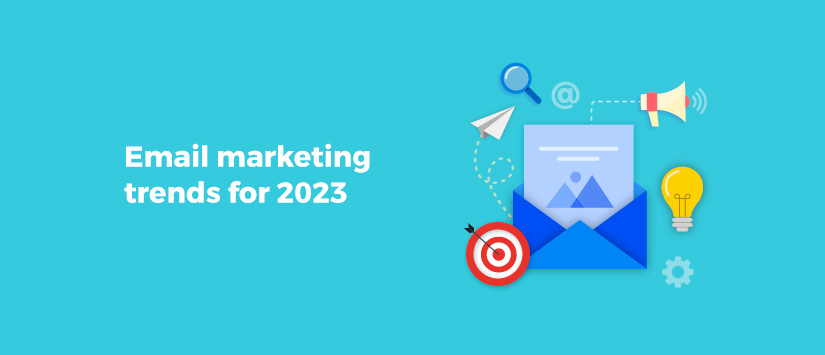Category: Email Marketing Trends

We start the year with the traditional proposal of email marketing trends for 2023. It's a projection based on our experience that we hope will help you to structure your next campaigns, stand out from the crowd and achieve your goals. You can consider these ideas as an inspiration for your new plan, but you don't need to try them all at once: add them little by little to your strategy and you will be able to test the results.
The open rate has long been a key metric to know if a mailing is working or not. But new privacy policies have made it less reliable. This does not mean that it should no longer be counted, only that it should be complemented with more relevant metrics.
Our recommendation based on this trend is to take a closer look at your statistical reports and check whether the evolution of the click-through rate or reading time is a better measure of your goals. It may be the case that you have to evaluate your monthly newsletter and your email marketing campaigns differently so that data protection management does not affect your results.
It is so common to see user generated content (UGC) in social media, but why is it still not taking off in email marketing? The answer is a thing of the past because gradually we are seeing more and more customer-generated content being inserted into different campaigns.
This kind of content is very useful when it comes to promoting products or services and that is why it is a good idea to include an image, phrase or link that talks about them. This way you can show that the company is a good choice for potential customers. It is a great persuasion tool, as well as a way to save time: including user generated content we have to create less new pieces on our own.
In addition, more and more campaigns are also being planned with the specific intention of obtaining graphic material created by the user, such as contests or sweepstakes in which a photo has to be sent, for example, using the product during the summer.
Artificial intelligence (AI) has made its way into the marketing departments of many companies. It is a great help in decision making, also in choosing the messages to send to potential customers thanks to its data processing capabilities, for example by combining results from previous mailings with purchase history to create the most appropriate communications in a highly personalised way.
AI is also starting to take off in content generation, with tools that write text and create images to accompany it in a matter of seconds, for example for subject lines, calls to action and headers. Throughout 2023, we will continue to hear about its possibilities.
Augmented reality (AR) and virtual reality (VR) are already present in many areas, both domestic and professional. It was only a matter of time before these technologies were transferred to the email marketing strategy. And it has arrived, at least for some mobile devices.
It is now possible to send a simple image and have it turn into a 3D object when the user clicks on it. For example, filters can be applied on the camera to try on products or place furniture in the dining room. In this way, the experience is much more immersive and the possibility of wanting to buy what you are trying on virtually becomes more real.
Plain text bores a younger generation that prefers to be active and interact with their surroundings. In email marketing, this trend involves adding elements that can be manipulated without forcing them to visit the browser.
One way to achieve this is with AMP, which allows interactive emails to be sent. This can mean, for example, embedded videos that can be played without going to YouTube, simple games that can be played directly from the email manager, or adjustments to products, such as size or colours, before they are purchased.
Messages with interactive content have a greater impact on the recipient, which positively benefits the sender's image.
The trend to include all kinds of database details is becoming increasingly clear. Sending a single message is a thing of the past because users want a demonstration that they are being treated as individuals, not as a homogenous mass of subscribers.
Even in last-minute, time-sensitive campaigns, this willingness to make better choices about who the brand communicates with, especially to personalise how it is done, is noticeable. Dynamic fields are the best tool to make this possible without having to invest too much time in preparing mailing variables and that each type of target audience receives a different message in their inbox.
The key to sending the right content, at the right time and to the right users is hyper-personalisation, for example by combining different data obtained from the CRM. This way, each potential customer receives what they are interested in and conversion is more likely.
Do not miss anything from our blog and join our Telegram https://t.me/acrelianews
Haven't you tried Acrelia News yet?
If you like this post, you will like much more our email marketing tool: professional, easy to use.